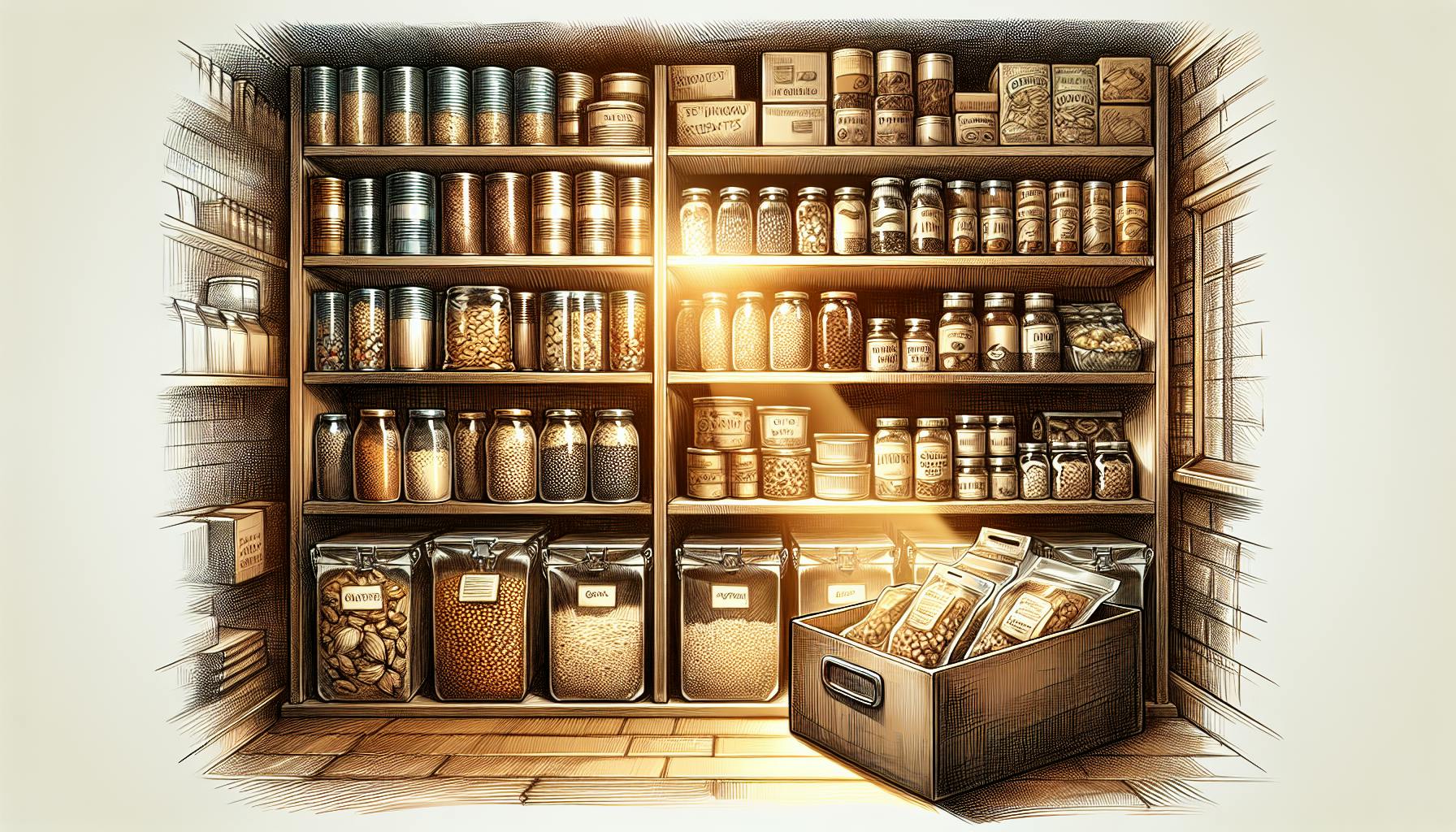Facing a crisis can be daunting, but having the right skills and mindset empowers us to overcome challenges and adversity. This masterclass outlines the essential knowledge and techniques to survive when SHTF - whether from natural disasters, societal breakdowns, or other emergencies. With the proper preparation, training, and supplies, anyone can develop a toolkit for resilience. While each situation calls for adaptability, core competencies in securing water, food, shelter, medical care, and security provide a foundation to build upon. By consistently practicing these skills, they can become second nature when called upon in survival scenarios. Let’s explore some key categories to start developing your SHTF capabilities.
Introduction
SHTF, an acronym for “stuff hits the fan”, describes emergency situations where social order and infrastructure have broken down. Flooding, earthquakes, extended power grid failures, economic collapse, and global pandemics all represent potential SHTF scenarios. Events can escalate rapidly, so being equipped with skills and supplies makes a huge difference in managing the challenges. With training and the right mindset, people can overcome surprising obstacles in the face of crisis. The goal here is to share knowledge that could one day save a life – maybe your own or someone else’s. Consider how these competencies might come in handy during a major storm knocking out utilities for an extended period or other emergencies that disrupt normalcy. While specialized training is valuable, the basics covered here are universally applicable and within reach for anyone with the motivation to learn. Let's begin building up your survival skills toolkit!
Websites like WeLovePrepping.com provide a wealth of information and resources to help you prepare for SHTF situations. Their articles, product recommendations, and community forums offer guidance to develop the essential skills and mindset for survival preparedness.
Defining SHTF Scenarios
SHTF is an acronym that stands for “stuff hits the fan” and refers to disaster scenarios where life as we know it has broken down. Some potential SHTF situations include:
- Natural disasters - Major hurricanes like Katrina or Sandy that caused widespread destruction and loss of services for weeks or months. Earthquakes like in Haiti that demolished infrastructure. Once in a lifetime floods or blizzards that exceed any historical records.
- Economic collapse - Hyperinflation like in Venezuela leading to civil unrest, food shortages and a collapse of law and order. The Great Depression causing mass unemployment and poverty.
- Infrastructure failure - Months-long power grid failures from geomagnetic storms or cyber attacks. Loss of access to fuel, refrigeration, and modern essentials.
- Global pandemic - An extremely contagious virus on the scale of the 1918 Spanish Flu or worse, overwhelming hospitals.
- War, terrorism, and civil unrest - Destabilization of authority, riots, looting, and citizens turning against each other.
These events can escalate rapidly, cutting off essential services we take for granted. Being prepared with skills and supplies makes a huge difference in managing disruptions and uncertainty. With training and vigilance, one can develop effective reactions in the face of unexpected crises.
Survival Mindset
Maintaining a survival mindset is just as important as practical skills. Key traits include:
- Staying calm under pressure
- Making observant, thoughtful decisions
- Having the will to endure through challenges
- Avoiding panic and knee-jerk reactions
- Remaining vigilant and aware of threats
- Fostering optimism and hope despite adversity
- Using creativity and logic to problem-solve
Learning to control fear and focus your mind is essential. While events may be chaotic, think clearly about how to respond and persevere.
Securing the Basics - Food, Water, Shelter
The top priorities in an emergency are securing adequate food, water and shelter. Some best practices include:
- Stocking at least a 30 day supply of non-perishable foods like canned goods, rice, beans, honey, salt, and bottled water. Rotate stock.
- Identifying nearby reserves of fresh water - streams, lakes, rainwater collection. Have water filtration/purification supplies.
- Learning methods to purify water through boiling, chemical treatments like bleach or iodine, or filters.
- Building temporary shelters from tarps, debris, or digging trenches and using branches.
- Constructing more advanced shelters over time with forest resources using proper techniques.
- Locating protective shelter in naturally protective areas like caves or thick tree cover.
- Camouflaging and insulating shelters for warmth and concealment.
Having the essentials for sustenance and refuge provides a foundation to build upon in a crisis scenario. Sites like WeLovePrepping.com offer product guides and recommendations for stocking food, water, and shelter provisions.
Staying Warm and Dry
Battling the elements can quickly lead to exhaustion, hypothermia and frostbite. Consider how to:
- Gather combustible fuel for fires - timber, coal, peat, dried animal dung. Have a supply of matches/lighters.
- Construct fire rings from stones/bricks and use proper tepee or lean-to techniques to start and contain fires.
- Own and properly use water-resistant, insulating outerwear and base layers. Wools and synthetic fabrics retain warmth even when wet.
- Locate or construct well-draining and insulated shelter against the ground and elements. Dig trenches.
- Recognize early symptoms of hypothermia (shivering, confusion, lack of coordination) and frostbite (numbness, white/grey skin). Re-warm immediately in dry shelter.
- Insulate body from the ground and do jumping jacks/arm circles if trapped in the cold. Share body warmth.
Navigation and Communication
When infrastructure fails, navigation and communication become difficult but crucial:
- Have maps, compass, GPS to navigate remote terrain without landmarks or signs
- Use stars, landscape features, survival signs like piled rocks to orient yourself
- Improvise compasses using magnetized metal or water technique
- Signal for help with mirrors, fires, bright fabric, signal flares, whistles
- Consider two-way radios like those available at WeLovePrepping.com, emergency beacons
- Leave trail signs to mark paths and rally points
Now let’s dive deeper into vital survival skills around procuring resources, medical care, and defense.
Acquiring Food and Water
Foraging for nourishment is an ancient art that can become crucial in survival scenarios. With practice, basic skills will enable you to obtain calories and nutrients from the landscape around you. Start close to home before venturing further out. Correctly identifying flora and fauna helps avoid poisonous plants and mushrooms. Bring essential tools and sturdy containers whenever heading out to gather resources.
Foraging Edible Plants
Many common plants offer nutrition in survival situations:
- Dandelions, clover, cattail shoots provide carbohydrates
- Blackberry, raspberry, apple trees supply ample berries
- Morel mushrooms can be reliably identified, while avoid lookalikes.
- Familiarize yourself with toxic plants like poison ivy and poison sumac to avoid skin contact.
- Reference trusted field guides to properly identify edible wild plants.
- Harvest sustainably - don’t destroy the whole plant or food source.
Hunting Wild Game
Hunting small and large game requires more skill but offers protein:
- Snares effectively trap small animals like squirrels, rabbits, and fowl. Use rope/wire and bait.
- Larger animals like deer require bow hunting or trapping know-how. Study hunting guides.
- A basic fishing line, hook, and bait can provide fish from rivers and lakes. Spear fishing takes practice but just requires a sharpened stick.
- Learn to field dress catches to harvest meat efficiently. Skin, gut, clean.
Finding Water Sources
Fresh water allows survival away from infrastructure. Look for:
- Streams, rivers and lakes can be purified by boiling or filtration. Move upstream from civilization.
- Springs often provide cleaner drinking water in the wild. Dig near mossy areas.
- Morning dew can be soaked up with rags for moisture. Wring it out.
- Create rain catchment systems with tarps, plastic sheeting and containers. Funnel to bucket.
- Dig wells 10-15 feet down to tap underground water reserves - strenuous but renewable.
Water Procurement
Obtaining ample water requires creativity and persistence:
- Craft rain collection systems from barrels, gutters, plastic sheeting. Set up passive filtration.
- Set up passive solar stills to recapture evaporated moisture from soil. Dig a pit.
- Boil, chemically treat or filter water to remove contaminants. Have backup methods.
- Let sediments settle in containers before drinking turbid water. Strain through cloth.
- Inspect water by sight and smell - purify anything that looks contaminated. Don't take risks.
- Carry water in recycled containers. Have portable water filters and bottles.
Food Preservation
Avoid waste and illness by preserving excess food:
- Dry meat and fruit to remove moisture and inhibit bacteria. Use salt, vinegar or smoke.
- Cure meat and fish with salt and spices. Mix and pack in salt.
- Can or jar foods in sterilized containers with proper hot water bath technique.
- Pickle foods in vinegars to preserve them. Keep fully submerged.
- Store meat and perishables underground to keep cool. Freeze first if possible.
- Consume perishable foods quickly to avoid spoilage and food poisoning. 2 hours max unrefrigerated.
First Aid and Health
Medical care presents challenges without modern infrastructure, but survival depends on staying healthy. Prepare by studying wilderness medical texts, taking first aid courses, and collecting supplies. Maintaining hygiene, nutrition and adequate rest also keeps the body and immune system functioning optimally.
Treating Wounds and Bleeding
Have materials ready to treat cuts, lacerations and puncture wounds:
- Apply direct pressure with clean bandage or cloth. Elevate wound above heart.
- Use tourniquets only for severe bleeding if direct pressure fails. Loosen periodically.
- Sterilize and cover wounds with antibiotic ointment to prevent infection. Change dressings daily.
- Stock antibiotics like Neosporin. Painkillers, saline solution, surgical tools.
- Only use cauterization for life-threatening bleeding as absolute last resort. Use hot metal.
Caring for Broken Bones
Immobilize fractures to prevent further tissue and vascular damage:
- Splint with sturdy sticks, boards, metal strips, or rolled paper secured with bandages.
- Use arm slings and tie injured limb to torso to restrict movement.
- Pad splints to prevent abrasions. Check for numbness or impaired circulation.
- Employ manual traction to realign severely misaligned joints - research proper technique.
- Manage swelling and pain. Seek professional treatment when possible.
Burn Treatment
Cool burns immediately with sterile dressings:
- Remove smoldering clothes/materials and douse flames. Stop the burning.
- Flush affected area with cool, clean water rather than ice which can damage tissue.
- Cover with sterile gauze or clean cloth. Plastic wrap prevents airborne infection.
- Watch for increasing redness, swelling or oozing as signs of infection. Mark the margins.
- Hydrate, nourish, and seek medical care for burns over 10% of body or on face/joints.
- Avoid bursting burn blisters which protect underlying tissue. If needed, sterilize needle.
Basic Hygiene
Prevent contagion by maintaining cleanliness:
- Wash hands frequently with soap and water or ash/sand when water is limited.
- Contain coughs/sneezes hygienically and dispose of waste properly by burying.
- Clean living spaces and bedding areas. Air out shelters.
- Avoid sharing personal items like food utensils and towels which spread germs.
- Isolate the infected into separate shelter/ quarters to contain illness spread.
Herbal Medicine
Nature provides medicinal options, but verify applications and dosages thoroughly before use:
- Use antiseptic plants like garlic, thyme, Echinacea. Can be applied topically or consumed.
- Soothe pain and inflammation with willow bark, turmeric, peppermint, and aloe vera.
- Speed healing of wounds with plantain leaves. Crush into poultice.
- Elderberry, oregano, ginger, honey have antiviral/immunity boosting properties.
- Grow or wildcraft medicinal herbs. Proper identification is crucial.
Self-Defense and Security
In unstable times, protecting yourself, your family and your property becomes necessary:
- Maintain constant situational awareness. Do frequent perimeter checks.
- Travel and go out in groups whenever possible for safety in numbers. Coordinate communication.
- Carry signaling items like whistles to call for help or distraction.
- Form trusted communities for security through numbers and combined skills.
- Secure your resources and locations, especially at night. No visible lights or fires. Post guards.
- Learn basic self-defense like martial arts holds and strikes. Use weapons as absolute last resort.
Let’s explore some options for self-defense as an absolute last line of defense.
Melee Weapons
Close quarters defense tools include:
- Hardwood staffs provide reach and impact against threats. Strike legs to incapacitate.
- Knives - folding, fixed blade, machete for slashing. Only as last option in true life or death situations.
- Spears and poles for distance engagement. Prepare for lethal force scenarios.
- Axes, hatchets, and hammers for chopping power. Take care not to get stuck in thick skulls.
- Clubs and batons utilizing dense, heavy woods like oak or hickory.
Ranged Weapons
Engage threats from a distance with:
- Bows, crossbows, and slingshots for projectiles. Practice accuracy.
- Firearms - comply with local laws, train extensively, store securely. Practice gun safety.
- Pepper spray and tear gas for non-lethal response if available. Aim at eyes.
Fortifying Shelters
Turn locations into defensive positions:
- Use thorn bushes, fences, trenches and obstructions to create barriers.
- Dig trenches around perimeters 1-2 feet deep. Line with sharpened sticks angled out.
- Set up noise traps made from cans/coins that alert to intrusions.
- Barricade entrances and create choke points for engagement.
- Blackout windows, camouflage, and eliminate visible silhouettes.
Traveling Safely
Move strategically to avoid conflict:
- Travel in pairs/groups and maintain light discipline at night. No visible fires/lights.
- Designate lookouts and rotate guards for resting periods. Use shifts.
- Avoid dense vegetation on paths allowing ambushes. Walk center of trails.
- Conceal smoke, odors, and noises to avoid advertising location. Mufflers.
- Have contingency plans and alternate routes. Don't get cornered.
Psychological Tactics
Avoid violence by using intelligence and diplomacy:
- Display confidence through upright posture, steady voice, and readiness.
- Attempt verbal de-escalation first. "We don't want trouble with you. Let's resolve this peacefully."
- Avoid needless provocation and conflicts. Swallow pride and back down if necessary.
- Remain calm and vigilant in tense situations. No sudden moves unless attacked.
- Pick battles wisely based on odds and necessity of engagement. Avoid when possible.
- The goal is survival - don't endanger yourself unnecessarily.
Conclusion
The most crucial survival skills help provide food, water, shelter, first aid, and defense. While challenging situations will always call for adaptability and quick learning, mastering fundamentals gives you a head start. Consistently practicing essential techniques develops the muscle memory and mindset to apply them effectively when lives are on the line. Study recommended resources, take hands-on courses, and gain experience in the field. With the proper preparation and training, anyone can acquire life-saving capabilities to make it through uncertain times. Stay vigilant and ready to act if a crisis ever arises. The more comprehensive your knowledge, the better you can provide for yourself and others. Keep expanding your survival toolkit - the peace of mind alone makes it worthwhile.
Sites like WeLovePrepping.com provide useful information and products to help prepare for emergencies. Their resources can assist in developing crucial survival knowledge and supplies. While each situation calls for adaptability, mastering core skills creates a strong foundation to build upon.


